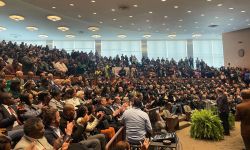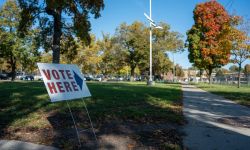Q&A: Ilitch-Ross developers talk District Detroit jobs, housing, tax breaks
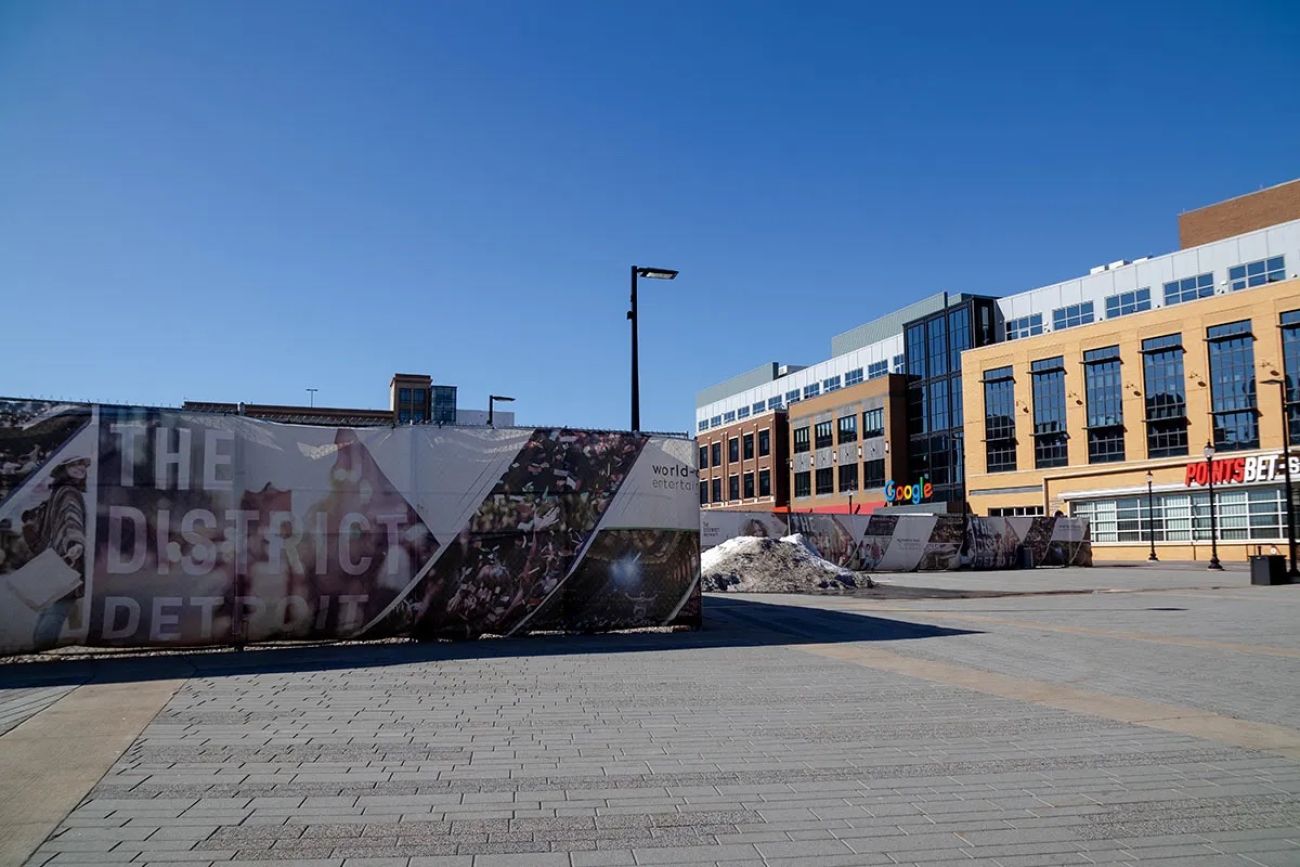
Who stands to benefit from another phase of downtown development pitched for District Detroit?
The $1.5 billion joint venture between Olympia Development of Michigan and Related Cos. aims to complete 10 buildings within five years. Plans include housing, offices, hotels and retail in rehabilitated or newly constructed buildings. Developers are “bullish” about reestablishing an Ilitch family vision that inched forward since Little Caesars Arena was built with taxpayer support.
Promoters say the new District Detroit will create broad economic benefits, like jobs for residents, growth for Detroit’s tax base and cool places to visit. Like the last plan, this one is also reliant on tax abatements and public subsidies. Developers are trying to close long-term deals to have costs reimbursed with $800 million in state and local tax revenue. It’s the largest publicly-supported project in the city’s history.
Related:
- 5 things for Michigan to know amid SVB banking crisis
- McMorrow: Democrats plan changes to Michigan’s business incentives
- GM offers buyouts to ‘majority’ of 35,000 salaried workers in Michigan
Much of the concept is tied to the University of Michigan’s plan for the Center for Innovation, a $250 million academic facility supported with a $100 million donation from Related Cos. founder Stephen Ross and $100 million from the state of Michigan.
Representatives for the District Detroit development team joined BridgeDetroit this week for an hour-long conversation about the project’s goals, the need for tax incentives and how it will impact longtime Detroiters.
This conversation has been slightly edited for length and clarity. Questions from Executive Advisor Stephen Henderson and Reporter Malachi Barrett are attributed to BridgeDetroit.
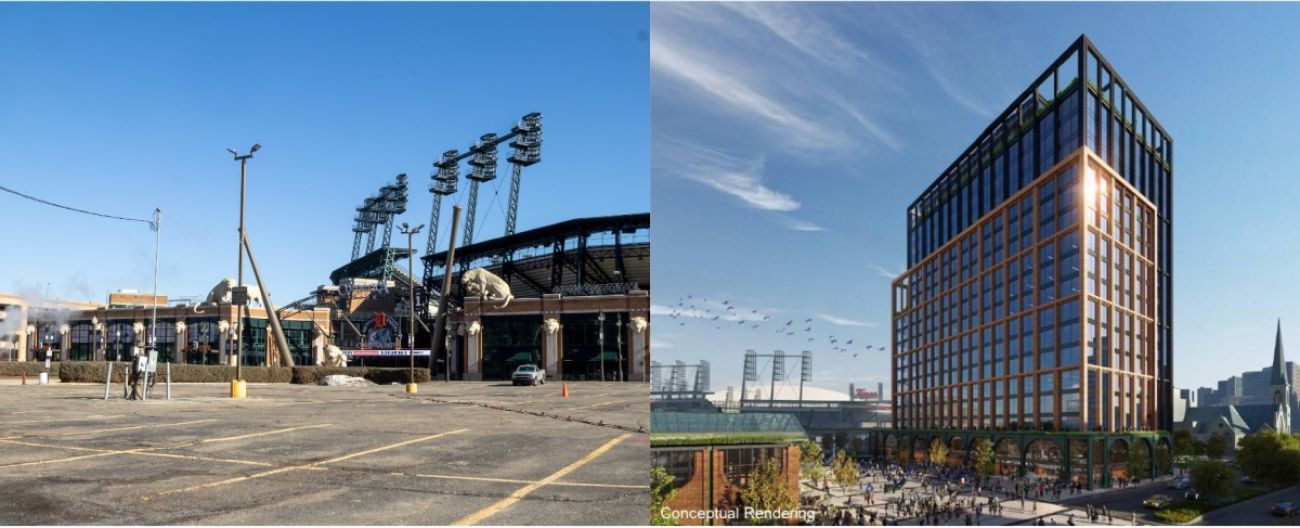
BD: There’s so much to this project, it’s housing, hotels, entertainment, business. How do you see that mesh together and how do you define success?
Keith Bradford, president of Olympia Development of Michigan: It is truly all of those things in the sense that there’s a huge education component, which we think is a significant catalyst to the great amenities that exist in the district with sports and entertainment. If we were to take these one building at a time, it illustrates the power of the 10 buildings collectively.
One at a time, if you build a residential building, it may not be that impactful. I’m proud of what Olympia Development accomplished over the last five years, but that’s what’s happened. It’s been one building at a time and it’s been sustained, long-term focused growth.
This is a catalyst that happens together. A lot of what Related Cos. brings to the table is experience in building all of this at one time.
A resident can live there with affordable housing, literally walk right across the street and go to work and to a brand new office building that’s built for today’s office users. Now a restaurant is viable during the middle of the day. It is training the workforce of tomorrow in the knowledge-based economy and making sure they’re geared toward the jobs of the future and not looking backward on that. It is all of the above that makes this work.
Ryan Friedrichs, vice president of Related Cos.: One of the most compelling elements is that ability to compete for the Amazon HQ2 that we didn’t have (in 2018). We weren’t even in the top 20 when we went after it. When you look at where Amazon landed, they landed in Virginia next to the Virginia Tech Innovation Campus.
To be competitive, that idea of a magnet that can diversify tech also (is important). If you look at Virginia Tech, it’s led by a guy named Lance Collins. When he was the dean at Cornell, he doubled the number of engineers of color who are graduating. He tripled the number of women graduating from engineering. His goal is really diversifying tech and that is a huge value add that Detroit potentially has.
The idea of bringing the research muscle and energy from the University of Michigan and the economic development muscle of Detroit … is really one of the most exciting, dynamic parts of the project.
BD: Beyond this project, what is the broader goal of Ilitch holdings in downtown Detroit? (A broad portfolio of land in a downtown area allows for tremendous power in shaping what a city looks like).
Bradford: I’m going to go back and echo Chris Ilitch’s vision from 2014. When he stepped out front and laid out what he wanted to get done, maybe his heart spoke a little stronger on the timeline he would get it done in, but his vision was correct.
It’s a district of walkable neighborhoods. We’ve got the added component of the U-M Innovation Center. I still think that vision holds true today. I do believe as we go north of I-75, you see a little more residential on that end. You start to see more neighborhood services. We’re not specific yet, we’re still planning these areas. But maybe that’s where we see a grocery store and a pharmacy and those kinds of things that start to complement that area. As the master plan lays out, I think you see Grand River become a tech corridor that complements the Center for Innovation.
You can call it visionary, you can call it being ahead of the times, but I do think that the accumulation of land that the Ilitches have acquired around these entertainment assets is literally what made this possible.
Without the land holdings that we have adjacent to Comerica Park or adjacent to Little Caesars, we wouldn’t have had room for the Center for Innovation and the ability to go down to Columbia Street. So I think those are paying dividends now when you try to do 10 projects in five years.
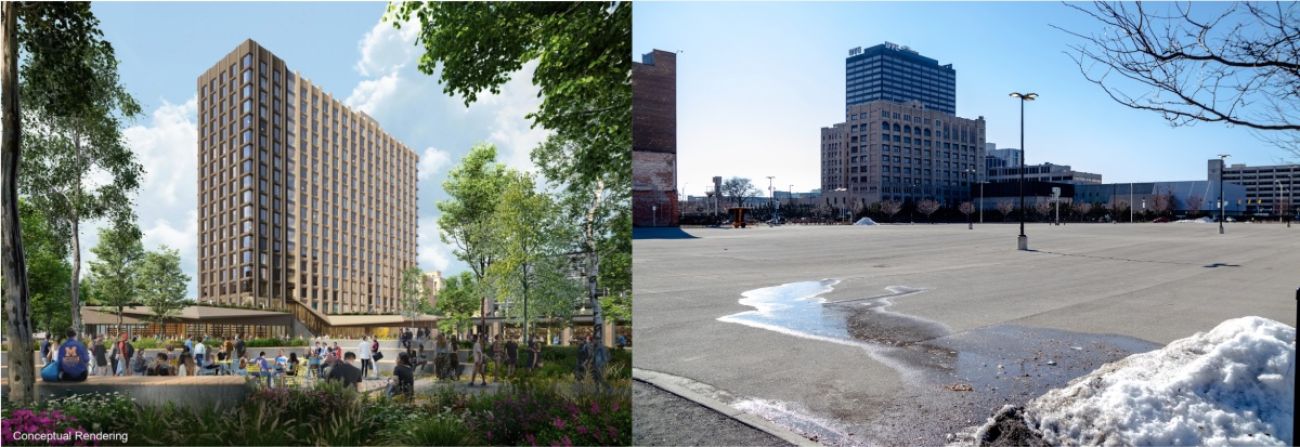
BD: A lot of focus has been on the $800 million tax abatement. How did the development team come up with that as the number needed to make this work?
Andrew Cantor, executive vice president of Related Cos.: Where it starts is with a master plan, a vision for how we see the potential for the neighborhood growing. There’s so much to build. After you have a big picture vision, which is determined by zoning and mixes and what you think will make a great neighborhood, then we culled it down to which projects make sense as the first phase.
Ten buildings is ambitious. The reason that we have a big first phase is because we believe the mix of uses want to work together and are better for that. Nobody wants to be in a downtown office district anymore. Similarly, no one wants to be in a residential or an entertainment district that doesn’t have places to work and dine and do all the other things.
What we’re trying to build is the fabric of a neighborhood in the quickest, strongest possible way based on the best practices we’ve seen from projects we completed and others completed across the country that made for active, strong, resilient downtowns.
Then you evaluate financially how to make those work. There was a series of cost estimates, feasibility studies, on what rents we could expect and various things like that to figure out how the financials might work. You plug into those calculations, what programs are available. Every program we’re accessing is available to anyone who qualifies for it in terms of size of development and type of development.
We worked to figure out how to make the projects feasible, knowing what potential project support would be available through these existing statutory programs. The returns remain pretty low, but because we are patient, we can accept slightly lower returns maybe than someone who is looking to make a quick buck and be in and out.
BD: We hear from the mayor that it’s a great time to build in Detroit and we have a lot of momentum with development. Residents ask ‘if this is such a great project, why are banks not feeling more comfortable providing more of the financing?’
Cantor: One thing that is exciting is the idea of bringing more institutional capital to Detroit and having more outside investors who are investing in other cities but haven’t yet invested in Detroit. That allows for scale and sustainable growth and reduces the cost of doing business, which are all things that will lead to a more sustainable cycle of growth. I can’t speak for the mayor, but I think that’s part of the enthusiasm and optimism we all share.
At the same time, this is a very hard project. If you look at the last two years and what interest rates have done, it’s clearly a challenging time. It’s a time when the strong bank relationships we have across the country are going to help all the more. People are uncertain. That creates a huge opportunity, a moment where we can do something that’s different and meaningful and I hope is replicable in Detroit and other cities as well. But by no means is this a slam dunk.
Instead of walking around trying to guarantee that we’re going to do anything, what we’ve been really clear about is that we’re doing everything we can, including spending millions of dollars right now at risk, to make this happen. The city doesn’t, and the state doesn’t, put anything at risk until we actually perform.
Let us take the risk and then you know, you come along for the ride if we’re successful.
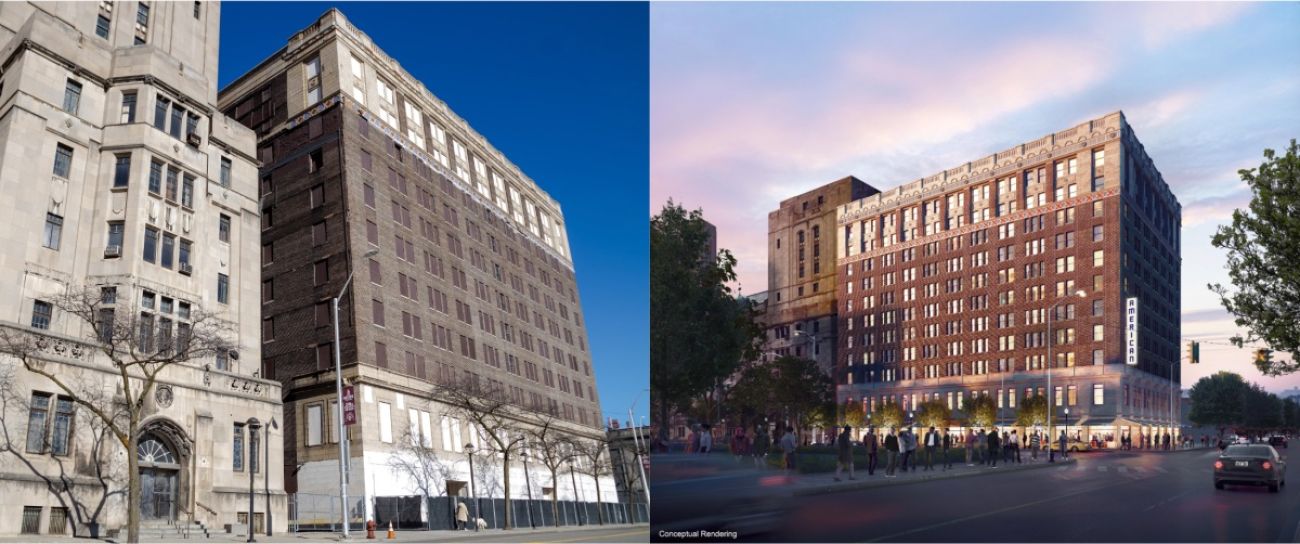
BD: Without incentives, the return on investment is estimated to be 2%. It’s 4.4% with the incentives. Why is it the public’s responsibility to make these projects more profitable?
Cantor: We can’t finance it at 2%. We just can’t.
To get someone to say, ‘yeah, I want to take the risk on this project is unreasonable. It’s a question of whether the projects can move forward. I don’t think a 4% return is acceptable either. I don’t think you would think so either if it was your money. We’re going to be working hard to try to do better than that.
If we can do this, and we can do well, others will do well. What’s going to happen, in my view, is that there will be more contractors who know how to build a tall building, who know how to build downtown. There will be more bricklayers who know how to restore buildings. There will be more work because costs will go down and productivity will go up across the board.
BD: Who will get the 12,000 construction jobs projected for District Detroit? An executive order requires Detroit residents work 51% of the construction hours for publicly-funded construction projects. Little Caesars Arena didn’t hit the target. What’s different this time?
Rian English-Barnhill, vice president of Olympia: There’s a lot of things that are different. We hit 36%, if I’m not mistaken, with the arena. With the completion of the Eddystone we hit 46%. Strides are being made to hit this 51% number.
(Note: City records show Detroiters worked only 23% of the construction hours for LCA.)
City agencies have changed since then. Detroit At Work is an incredible force to be reckoned with now and is deeply connected to the neighborhoods. How we get access to opportunity has changed.
Unions are having that conversation now, too. How we can work with Detroit Public Schools to get more folks into the trades is a significant issue that I know all hands on deck are working on.
Yanet Garcia, vice president for Related Cos.: Our commitment to Detroiters is greater than jobs. It’s about building long-term sustainable careers. If you think about the scale of this project and the trajectory of someone starting off with either Detroit At Work or coming in as an apprentice with the unions, imagine those individuals in the five to seven years. You go from apprentice to journeyman. That’s the impact and the commitment we have for Detroiters.
One of the things we’ll do is remove some of those barriers for small contractors. We have $1.5 million for a bond fund to help those small businesses grow and be able to hire individuals we’re training and developing.
We’re putting measures in place through a program we started in Chicago called the Council on Construction Operations, which addresses stigmas of the job site to make sure people of color, women, people of different religions and beliefs are treated with the respect all of us expect at a professional job. All of this put together is what our commitment to our workforce and our contracting is going to look like long-term.
BD: Through the community benefits agreement, there’s a lot you’re doing to hire Detroiters for construction and meet that 51% target. Yet, we all assume it’s probably not going to happen. Is that a fair assumption?
English-Barnhill: You either hit it or you don’t. You mentioned forces at work and yet as developers, we’re being fined for this. It’s not a lovely feeling to pay those fines, yet we do it on time. We really are interested in a systemic solve. It is getting more folks into the workforce. It is keeping them in the workforce. It is scaling. It is also union participation and getting more people into the unions.
It’s a big problem to tackle, but I do think that everyone is laser focused on it. It is a little disheartening when you said, ‘I know you guys are doing all of these things to address the problem but nobody thinks it is going to make a difference.’ That is still not deterring us from being passionate about solving the problem.
We want to hit that 51%, and we’re making strides to get there. We also need all hands on deck and it is not the sole responsibility of the developer to solve such a complex problem.
Garcia: The commitment I have seen from Detroit At Work, from the unions and the development team to address this collectively is what’s giving confidence that we’re going to hit these numbers.

BD: It feels like we wouldn’t be doing our job if we didn’t ask point-blank if you expect to hit the 51% threshold.
Bradford: It’s going to be very hard. We’re going to give it our best shot to do what we can do. We’re not the only developers in town building projects either.
It’s a significant task that we are willing to give our all. We don’t think it’s acceptable to say ‘hey, we can’t get there so let’s do nothing.’ We’ve got to get more people interested in these trades to fill the pipeline so 51% can be achieved. That’s not the case today. We’ve got to get there.
BD: Tell us more about the long-term jobs that are going to come out of this. You had a financial analysis commissioned that estimates the average salary for office jobs will be six-figures. Will a majority of jobs go to people from outside the city once the project is finished?
English-Barnhill: Let me go on the record and be abundantly clear: We want these jobs to be for Detroiters. Currently, a lot of our talent is leaving the city. In order to stop that, we need to have high-paying jobs young people can aspire to take. It’s not even just young people.
I would also like to say that there’s honor in all work, and I know the conversation always skews to this place that some type of work is not a quality job. I want to steer away from that in these types of conversations.
We don’t look at some of the positions in food and beverage or hospitality as being careers, yet we know they are. I don’t like the conversation going to this binary of good jobs and bad jobs. We want Detroiters to have a bite at all of these jobs.
Friedrichs: Wayne State Business School is right on the footprint, you have a tremendous engine in and of itself with a tremendously diverse student body who’s been a huge supporter of this project.
Dozens of students have started showing up at City Council, which is wonderful. Detroit-based students are saying ‘we want to stay.’ We want to retain the talent that’s generated here. Retaining that young, very diverse student body there is a critical component of this for those long-term and permanent jobs.
Diversifying tech, looking at that Virginia Tech Model, hoping U-M takes that lead. That’s our pitch to the companies, this is a purpose-driven development where they want to come to Detroit for that diverse talent.
English-Barnhill: We say jobs, jobs, jobs until we’re blue in the face, but we don’t talk about what jobs actually do. Good-paying jobs lead to homeownership and homeownership leads to neighborhood stabilization.
What does this project do for the neighborhoods? When people are making good money and putting food on their table and are able to buy their first home, that changes a city far more than just the impact area in which we’re building.

BD: We got Little Caesars Arena, we got some other things, but we did not get anything close to what was previously pitched for District Detroit. Should Detroiters have diminished expectations?
Bradford: Bringing on a partner like Related Cos. helps the odds in making this successful. But real estate is a difficult business and it can be unpredictable and sensitive to economic conditions. The city has been through multiple economic conditions during the timeframe.
Sometimes the timeframe of development can be much longer than people perceive. Just one building alone from conception to cutting the ribbon is three-plus years long for a single building. We’re stacking them on top of each other here and we’re doing 10 in five years. That’s fairly aggressive but we believe that it needs to happen together to make it possible.
I want to point to some of the success that happened, not to sound defensive at all, I hope. I’ll use the arena as an example; The original site was where we’re planning the U-M academic center. It would have been a pretty smart move. The (Ilitch) family put (LCA) north of I-75 very intentionally. They wanted to spur development further north. Because of that, I look at the Woodward corridor now and I look at Brush Park. Maybe it wasn’t specifically all built by Olympia, but it spurred growth by others.
I get the frustration, I understand it. I hear it in the questions that we’ve been asked over the last two years. The time is right. The partner is right with Related Cos. We’ve got an academic center here that’s an additional catalyst to make all this possible.
BD: The affordable units are being offered at 50% of area median income. (For a two-person household in Wayne County that’s under $36,000. The median income for Detroit is under $35,000). Can you address how the affordable rate doesn’t reach the average city resident? Also, tell us about the need for market-rate housing downtown.
Cantor: We feel very good about the demand for residential downtown. We’ve seen rent growth consistently. We’ve seen demand and activity and life around, it’s become a residential destination in a major way.
We have our highest-end product along by the ballpark on Woodward and then the Center for Innovation-oriented housing as well. It’s a different range of prices. That allows us to bring more online more quickly by having diversity. We expect the DCI (Detroit Center for Innovation) and companies that have been attracted to the DCI is going to accelerate demand for residential. It makes it all the more attractive for people to live downtown when they’re also working downtown. We think that that’s going to be a continued source of growth in demand along the way.
The investments that have been made in the area already and that will continue to be made in the area, like I-375, are all things that are going to unlock value and opportunity downtown and make it that much better of a place to live. One of the challenges is until you build this, it’s very hard for residents or people to imagine what it can be.
We have to set a vision for the future, and we feel very bullish about what that vision looks like.
BD: Detroit residents are concerned they won’t be able to afford these “deeply affordable units” and that most of the housing will go to people outside the city.
Cantor: The opportunity connector and marketing housing through the city’s housing portal, were both commitments we’ve made to make it easier for people in Detroit to get themselves into the housing. We and the city spent a long time trying to talk about how to create both preferences for people who are longtime Detroiters, but also when you’re talking about a low income population, not create barriers to entry by making the process by which you can qualify to rent too onerous.
We’re working with the city to try to find a calibrated, balanced approach. The inclusion of Section 8 vouchers was one intentional way to do so, to make sure the units were affordable and accessible to people who otherwise might not meet the 50% of AMI. Those are all strategies that we’re employing to try to make sure that Detroiters do find housing here.
Business Watch
Covering the intersection of business and policy, and informing Michigan employers and workers on the long road back from coronavirus.
- About Business Watch
- Subscribe
- Share tips and questions with Bridge Business Editor Paula Gardner
Thanks to our Business Watch sponsors.
Support Bridge's nonprofit civic journalism. Donate today.
See what new members are saying about why they donated to Bridge Michigan:
- “In order for this information to be accurate and unbiased it must be underwritten by its readers, not by special interests.” - Larry S.
- “Not many other media sources report on the topics Bridge does.” - Susan B.
- “Your journalism is outstanding and rare these days.” - Mark S.
If you want to ensure the future of nonpartisan, nonprofit Michigan journalism, please become a member today. You, too, will be asked why you donated and maybe we'll feature your quote next time!


